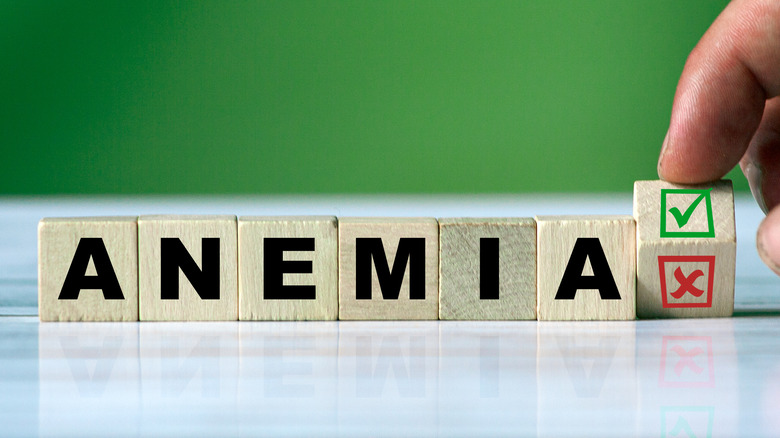What Are The Risk Factors For Iron Deficiency Anemia?
Iron deficiency anemia is a serious disease caused when your red blood cells lack sufficient iron, explains Mayo Clinic. Iron is a critical component of the hemoglobin compound found in red blood cells that is necessary to carry oxygen from the lungs to the other organs in your body. In its absence, oxygenated blood doesn't reach the tissues; and, as a result, you may experience signs of anemia or iron deficiency.
Per Healthline, people with iron deficiency anemia often feel tired and out of breath. Lack of iron may also cause tongue swelling, dizziness, headaches, tingling feet, rapid or irregular heartbeat, cold hands or feet, pale skin, weakness, pica, and brittle nails.
It's important to seek timely treatment for iron deficiency anemia to avoid serious health complications, such as stunted growth, cardiovascular issues, or problems during pregnancy, adds the Mayo Clinic.
Eating iron-rich foods, such as red meat and green leafy vegetables, and taking iron supplements usually helps iron deficiency anemia, according to the Cleveland Clinic. However, sometimes an intravenous (IV) infusion of iron or a blood transfusion may be necessary.
What puts you at risk of iron deficiency anemia?
If you're a woman, you are at high risk of getting iron deficiency anemia, per The Well Project. That's because women go through numerous internal changes throughout their lives — primarily pregnancy and periods — both of which result in blood loss. For example, women aged 12 to 49 years lose blood every month through menstruation. Using birth control such as intrauterine devices (IUDs) or having uterine fibroids may also lead to blood loss, creating a risk for anemia.
Additionally, if you're not getting sufficient iron in your diet, you may be susceptible to iron deficiency anemia, according to the Mayo Clinic. Not eating iron-rich foods — such as eggs, leafy green vegetables, citrus fruits, and various herbs — can increase the risk of iron deficiency anemia symptoms at any age. People who don't eat meat like vegetarians may also be at risk unless they eat iron-rich plant foods.
Frequent blood donors are also at risk, according to the American Red Cross. People who donate blood generally lose anywhere from 220 milligrams to 470 milligrams of iron, depending on the type of donation they are making. According to the organization, it can take anywhere from 24 to 30 weeks to replenish your iron. If you donate often, there is the potential that you may not be replacing your iron as quickly as you are losing it.


